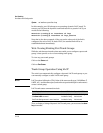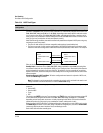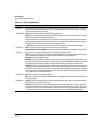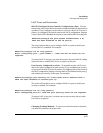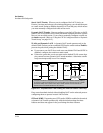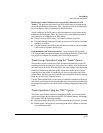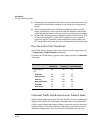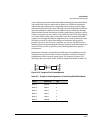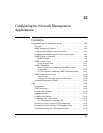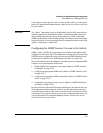
Port Trunking
Port Status and Configuration
■ Depending on the capabilities of the device on the other end of the trunk,
negotiate the forwarding mechanism on the trunk to the non-protocol
option.
■ When auto-negotiated to the SA/DA forwarding mechanism, provide
higher performance on the trunk for broadcast, multicast, and flooded
traffic through distribution in the same manner as non-protocol trunking.
■ Support FEC automatic trunk configuration mode on other devices. That
is, when connecting FEC trunks to FEC-capable servers, switches, or
routers having FEC automatic trunk configuration mode enabled, the
FEC trunks allow these other devices to automatically form trunk groups.
How the Switch Lists Trunk Data
Static Trunk Group: Appears in the menu interface and the output from the
CLI show trunk and show interfaces commands.
Dynamic LACP Trunk Group: Appears in the output from the CLI show lacp
command.
Interface Option Dynamic LACP
Trunk Group
Static LACP
Trunk Group
Static Non-Protocol
or FEC Trunk Group
Menu Interface
CLI:
show trunk
show interfaces
show lacp
show spanning-tree
show igmp
show config
No Yes Yes
No Yes Yes
No Yes Yes
Yes Yes No
No Yes Yes
No Yes Yes
No Yes Yes
Outbound Traffic Distribution Across Trunked Links
All three trunk group options (LACP, Trunk, and FEC) use source-destination
address pairs (SA/DA) for distributing outbound traffic over trunked links.
SA/DA (source address/destination address) causes the switch to distribute
outbound traffic to the links within the trunk group on the basis of source/
destination address pairs. That is, the switch sends traffic from the same
12-26



